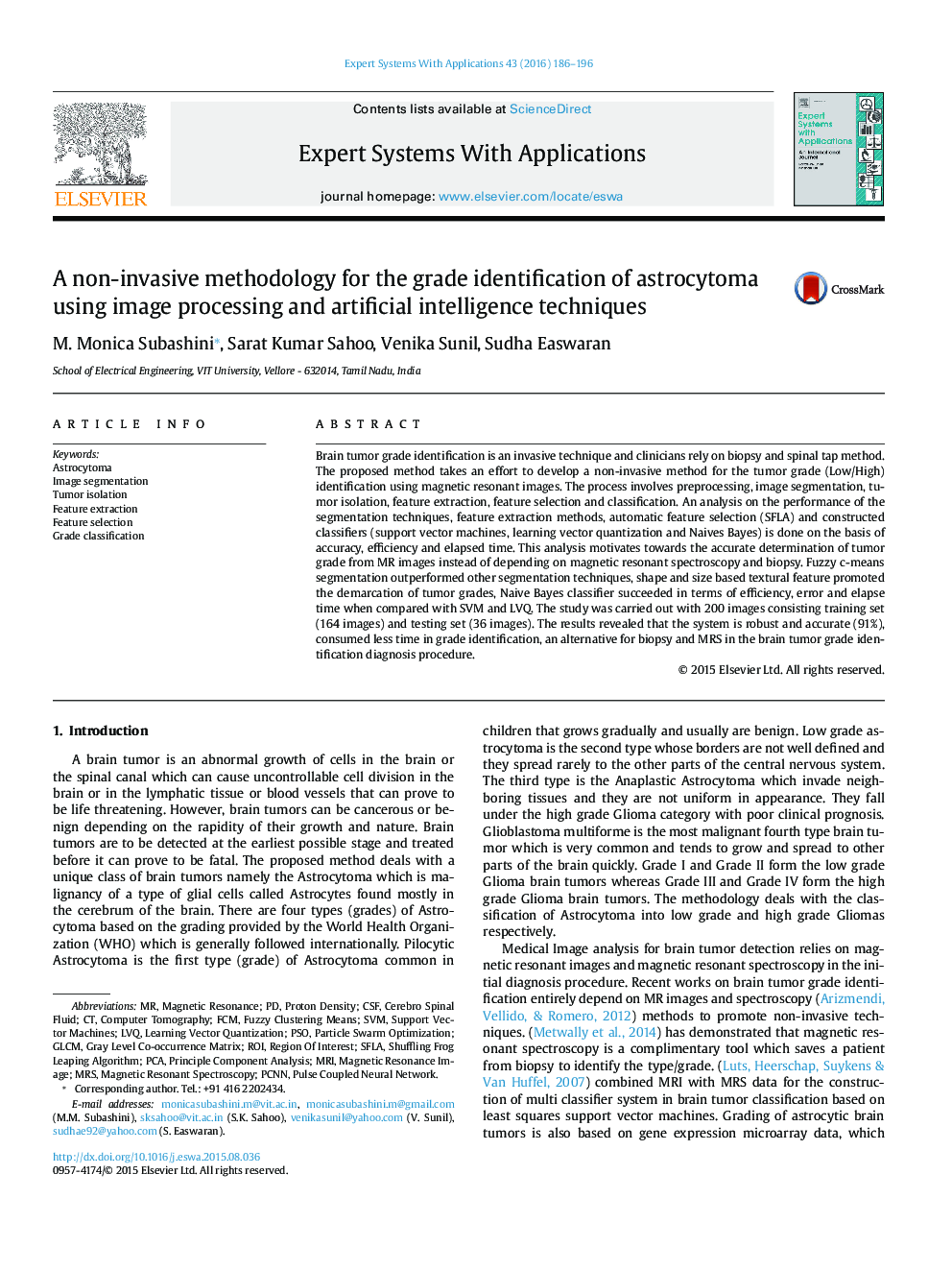| Article ID | Journal | Published Year | Pages | File Type |
|---|---|---|---|---|
| 382648 | Expert Systems with Applications | 2016 | 11 Pages |
HighLights•To suggest a non-invasive method for classification of Astrocytoma through rigorous training and testing.•To compare and conclude the best medical image segmentation technique.•To develop an efficient automatic feature selection technique for grade identification.•To analyze and quantify the performance of classifiers constructed for the grade identification of Astrocytoma (tumor).
Brain tumor grade identification is an invasive technique and clinicians rely on biopsy and spinal tap method. The proposed method takes an effort to develop a non-invasive method for the tumor grade (Low/High) identification using magnetic resonant images. The process involves preprocessing, image segmentation, tumor isolation, feature extraction, feature selection and classification. An analysis on the performance of the segmentation techniques, feature extraction methods, automatic feature selection (SFLA) and constructed classifiers (support vector machines, learning vector quantization and Naives Bayes) is done on the basis of accuracy, efficiency and elapsed time. This analysis motivates towards the accurate determination of tumor grade from MR images instead of depending on magnetic resonant spectroscopy and biopsy. Fuzzy c-means segmentation outperformed other segmentation techniques, shape and size based textural feature promoted the demarcation of tumor grades, Naive Bayes classifier succeeded in terms of efficiency, error and elapse time when compared with SVM and LVQ. The study was carried out with 200 images consisting training set (164 images) and testing set (36 images). The results revealed that the system is robust and accurate (91%), consumed less time in grade identification, an alternative for biopsy and MRS in the brain tumor grade identification diagnosis procedure.
